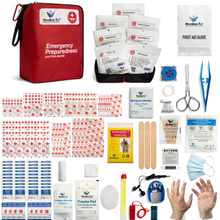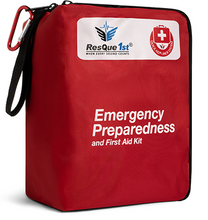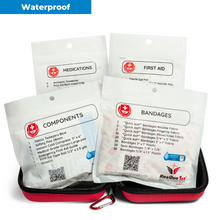
Burns can happen quickly. Too much time in the sun without proper sunscreen application. A moment of inattention while curling your hair. Your child accidentally tipping over your hot tea on himself when he rushes to hug you. But you can be prepared to handle any burn emergency by implementing some of the prevention tips listed below and knowing just what to do in the event of a burn.
Types of Burns
You can be burned in a variety of ways. There are thermal burns caused by heat - either through scalding from hot liquids or from contact with flames or hot objects. There are electrical burns caused by direct contact with electricity - such as touching a live wire or sticking something in an outlet. And there are chemical burns resulting from ingesting or touching a chemical substance - such as swallowing things like drain cleaner or spilling chemicals such as bleach on the skin.
Burns generally fall into three categories.
First-degree burns are the mildest form of burn and affect the top layer of the skin. The symptoms include swelling, redness and pain. The skin may be tender to the touch.
Second-degree burns also affect the skin layers beneath the top layer. They produce blisters which can break open, leaving the area looking wet. Other symptoms include severe pain and redness.
Third-degree burns affect all the layers of the skin and the underlying tissue. This most serious type of burn leaves the top layer of skin looking waxy white or leathery brown or charred. Because there may be some nerve damage, the area may feel numb.
This article will focus on first-degree thermal burns.
Call 9-1-1 Immediately if:
- The burn goes through all the levels of the skin
- The skin is leathery, charred looking or has white brown or black patches
- The burn is larger than 3 inches
- The burn covers the hands, feet, face, genitals or a major joint
- The person is an infant or a senior
How to treat a first-degree burn:
According to WebMd, the first thing to do in any burn situation is to stop the burning immediately. This means stopping the person’s contact with the burning material, be it a hot liquid, steam, etc. In the case of fire, help the person “stop, drop, and roll” to put out the flames. Then remove all smoldering material from the person, including clothing. If the clothing sticks to the skin in some part, cut around it. Also, immediately remove any constrictive clothing or jewelry because the burn can swell quickly.
Then follow these steps:
- Cool the burn. This can be done by holding the skin under cool (not cold) water or immersing it into cool water until the pain goes down. If there is no running water, use cool compresses.
- Protect the burn. Cover it with a sterile, non-adhesive bandage or clean cloth.
- Treat the pain with over-the-counter pain relievers, such as ibuprofen (Advil, Motrin), acetaminophen (Tylenol) or naproxen (Aleve).
The burn should heal within a week.
To help the skin heal and prevent scarring, you can use antibiotic ointments or home remedies such as aloe vera and honey.
See a doctor if:
- There are signs of infection: increased pain, redness, swelling, fever or oozing or red streaks running through the skin near the wound
- The person needs a tetanus or booster shot
- The burn blister is more than two inches across and oozes
- Redness and pain last for more than a few hours
- The pain gets worse
How to help prevent thermal burns
Here are some simple steps to take to help prevent thermal burns.
- Keep matches, lighters and candles out of the reach of children.
- Use a cool-mist humidifier or vaporizer.
- Use care when using irons, flat irons, curling irons or other heated appliances.
- Help prevent fires by installing smoke alarms and maintaining them properly.
- Don’t smoke in the house, or when tired or taking medication that causes drowsiness.
- Don’t use fireworks or sparklers.
- Set the thermostat on the hot water heater to 120℉. Higher temperatures can scald the skin.
- When cooking turn pot handles toward the back of the stove.
- Keep hot foods and drinks out of the reach of children.
- Put a screen on fireplaces and wood-burning stoves. If there are young children in the house, screen radiators and electric baseboard heaters.
- When it is hot outside, check playground equipment before using. Better yet, use it only in the morning before it has a chance to get hot.
- Hide the metal latch of the seatbelt in the seat to prevent the sun from heating it directly.
- Apply sunscreen when going outside. And limit direct sun exposure.
Minor burns can happen quickly and unexpectedly. You can be prepared to handle them by using basic first aid techniques and the supplies found in a good emergency kit. Having one handy in your home and in your car will allow you to handle a burn emergency with confidence.








